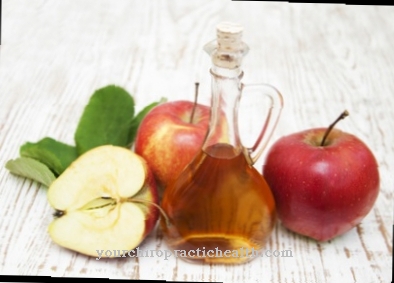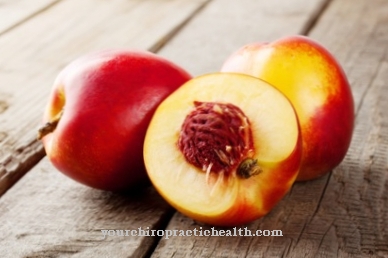Most people know lard still from her grandmother's kitchen. Lard is a very pure fat, which is usually made from the animal fat of pigs or geese that is obtained during slaughter. The melted fat is a real classic as a lard, but it is also very suitable for roasting and baking hearty dishes.
What you should know about Schmalz

Lard is usually the fat left over from slaughtering pigs or poultry such as geese, which is first chopped up and then left to melt. In industry, melting can take place under pressure at low temperatures or using hot steam.
The result of the melting process is a rather softer but spreadable fat for all types. Harder animal fat, on the other hand, is called sebum. The best known example of this is beef tallow. Since lard is easier to spread at warmer temperatures, it is mainly consumed as a spread in summer. Schmalz was originally created before the era of the refrigerator out of the intention to make fat more durable by heating it up. In addition, thanks to the production of lard, the resulting slaughter fats find a meaningful use, which means that less animal waste is left over during slaughter.
Which animal the lard comes from can be easily recognized by its color: while pork lard is white, the lard from geese has a yellowish tone. In addition, goose lard is significantly softer than lard, even almost liquid at room temperature, and is therefore often mixed with lard if it is to be used as a spread. In terms of taste, lard is reminiscent of the meat of the respective animal. If dishes are cooked in lard, they take on the respective taste to a certain extent. Schmalz is particularly popular and readily available in Bavaria.
So-called "Flomenschmalz" also comes from pork, but is made exclusively from fat from the bowels and is particularly fine. The well-known "Griebenschmalz" is normal lard to which firm pieces of tissue such as the fried cubes of bacon from the pig or the pieces of skin from the goose have been added. These solid pieces of fat are called the eponymous "greaves".
Lard can be seasoned in different ways. Onion lard and apple lard are widespread and herbs such as thyme or marjoram are also good as an additional flavor note for the lard. So that vegetarians can also enjoy lard products, vegetarian lard made from vegetable oils came onto the market. It is based on vegetable fats, which contain the highest possible proportion of saturated fatty acids. These include above all coconut oil and palm oil.
Vegetarian lard is particularly often seasoned with onions or apples. In addition, clarified butter, i.e. carefully heated butter that has been clarified by water and proteins, belongs to the group of lard in the broadest sense and is particularly versatile in the kitchen due to its more neutral taste.
Importance to health
The consumption of lard is neither good for the figure nor the health: Lard consists of pure fat, which in turn is made up primarily of the less healthy, saturated fatty acids. The high fat content makes lard a real calorie bomb.
The composition of the fatty acids in vegetarian lard is a little more favorable because it contains less saturated fatty acids. Nevertheless, vegetarian lard is no less high in calories than animal lard.
Ingredients & nutritional values
| Nutritional information | Amount per 100 gram |
| Calories 902 | Fat content 100 g |
| cholesterol 95 mg | sodium 0 mg |
| carbohydrates 0 g | |
| Fiber 0 g | protein 0 g |
With 100 grams of pure lard from pork or goose, around 100 grams of fat contain around 39 grams of saturated fatty acids and 11 grams of polyunsaturated fatty acids.
In addition, the following vitamins and minerals are contained in lard, even if only in small amounts. The values given also relate to 100 grams of pure animal lard:
- 0.0025g salt
- 0.01mg of vitamin A.
- 0.02mg vitamin B6
- 1.61mg of vitamin E.
- 0.1mg iron
- 1mg magnesium
- 0.1mg zinc
Intolerances & allergies
There are no known allergies to lard per se. However, the fats contained, especially the saturated fatty acids, can cause the typical health problems associated with high fat consumption in the long run. These include in particular cardiovascular diseases. Vegetarians should also keep in mind that lard is an animal product.
Shopping & kitchen tips
By heating the animal fat used during production, lard can be kept almost indefinitely. Even outside of the fridge, pure lard can be stored very well. In the past, the long shelf life was the only reason why the fat used was allowed to melt.
Pork lard has a particularly long shelf life. Vegetarian lard or those with additives such as onions or apples, on the other hand, can become rancid or spoil and should therefore be stored in the refrigerator. Lard is available in both supermarkets and butchers. If you don't want to dig deep into your pocket, you should use lard. This is significantly cheaper than goose fat.
In principle, you can make your own Schmalz in just a few steps. To do this, the respective fats only have to be melted in a saucepan over low heat and seasoned as desired.
Preparation tips
Lard smeared on a slice of bread is a true classic. The so-called "Schmalz-Stulle" has a long tradition, but is still very popular. In Bavaria in particular, lard is a popular spread on special occasions. Lard tastes particularly good on a slice of rustic brown bread. A beer as a drink is always a good choice in terms of taste. In addition, radishes, often made into a salad, are often served as a side dish to the lard.
In addition to spreading on bread, animal lard is also suitable for frying, clarified butter even for frying and deep-frying. This property makes lard an ideal fat for the production of hearty dishes. Dishes prepared in clarified butter have the most neutral taste. Lard is also very suitable for baking, for both savory and sweet dishes.
Lard can be heated to a comparatively high level because the so-called smoke point is higher than that of many other fats. However, lard also has a stronger flavor than many other fats. Vegetables such as cabbage, in particular, get a fine aroma when they are seared in lard.
























.jpg)



